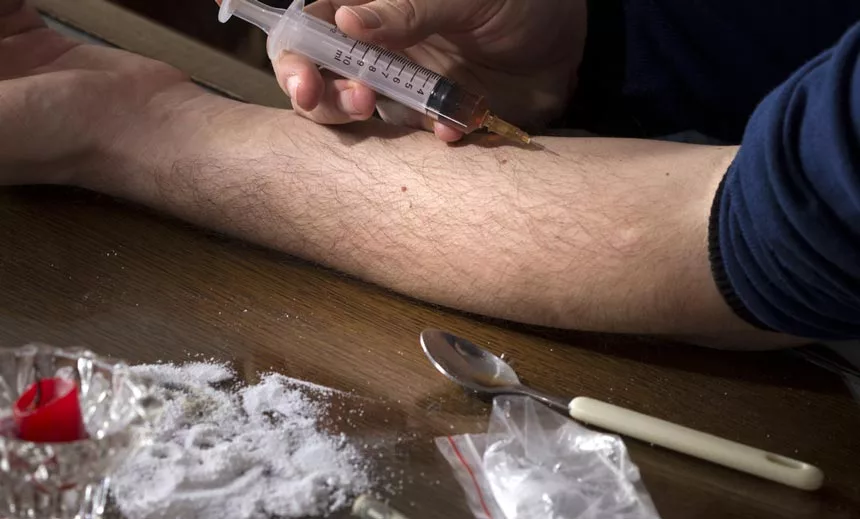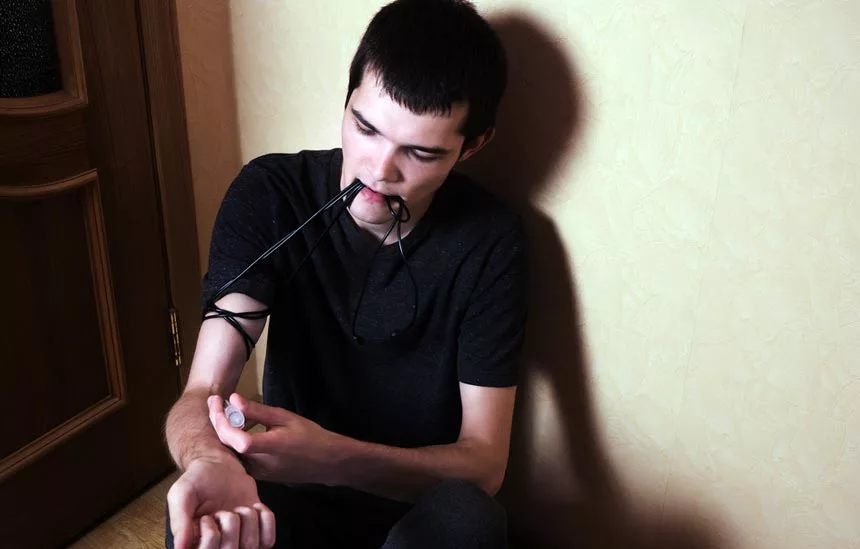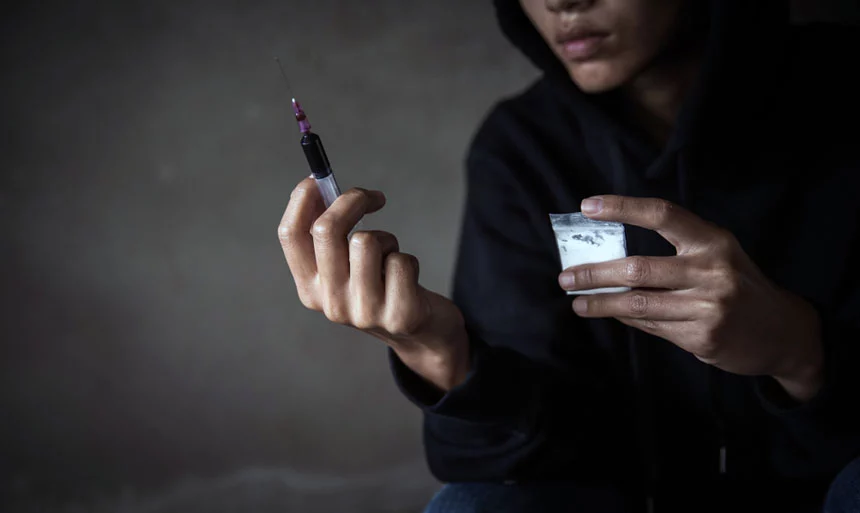The Origins of Heroin
Table of Contents
- The Origins of Heroin
- How do People Use Heroin?
- What are the Effects of Heroin?
- Where Does Heroin Come From?
- A Brief History of Heroin Use
- Understanding Heroin Abuse and Addiction
- The Importance of Rehab in Treating Heroin Addiction
- How to get Heroin Out of Your System
- Opioid Management and Withdrawal Assistance
- Finding Treatment for Heroin Made Easy
Heroin is an opioid drug derived from morphine. A brief answer to ‘’where does heroin come from’ is relatively simple: it begins as a natural substance created from the seed pod of opium poppy plants native to Southeast and Southwest Asia, Mexico, and Colombia.
But this is only the beginning of the long and winding road that processes opium into morphine base and heroin before it reaches the US.
Keep reading to find out more about the origins of illicit heroin, as well as the risk of using this dangerous drug, and how to find effective treatment if you have become addicted!
How do People Use Heroin?
Heroin is commonly found as a white or brown powder, similar to powdered milk, or can come in the form of a black sticky substance called black tar heroin. Like other opioids, this drug is highly addictive, and classified by the Drug Enforcement Administration as a Schedule I substance.

This means that, unlike some prescription opioids, heroin has a high risk for drug abuse, with no accepted medical purposes. Unfortunately, illicit heroin use has become increasingly common throughout the country.
There are various ways of using heroin, including sniffing, snorting, smoking, or injecting the drug. Injection drug use is the most common method amongst regular heroin users, as the drug reaches the brain faster, producing the desired effects more quickly and intensely.
This, however, can lead to various issues when done over long periods of time, including collapsed veins, track marks, and a higher risk for opioid overdose. This can also clog blood vessels, leading to severe long-term effects, and even death.
What are the Effects of Heroin?
Heroin rapidly travels through the body, where it will bind to opioid receptors on cells in various areas of the brain. In particular, the drug will affect those areas involved in controlling pain and pleasure, as well as heart rate, sleeping, and breathing.
This can produce an intense, but brief, euphoric high, which can be addictive for the user. Its short duration usually causes people to continue using it multiple times or mixing with other drugs in order to prolong the effects.
This can be dangerous, leading to the development of addiction to heroin, as well as various other unpleasant side effects.
Where Does Heroin Come From?
Most heroin production occurs in the Middle East and South America, where opium poppies grow naturally. Morphine is extracted from the opium poppy plant in laboratories, before being transferred to other usually unauthorized and unregulated labs to be converted into heroin.
Heroin use and abuse can occur throughout a range of people, regardless of their cultural, social, or economic backgrounds. While first-time users are usually in their teens or 20s, those who use heroin regularly tend to be over the age of 30.
This, of course, is just a generalization. Heroin abuse occurs and can be equally dangerous in people of all ages.
A Brief History of Heroin Use

Heroin was originally developed and marketed as a treatment method for tuberculosis and morphine addiction after being manufactured by the Bayer pharmaceutical company in 1898.
During the 1850s, the United States struggled heavily with opium addiction. This led to the development of treatment methods involving the administration of a “non-addictive” opioid substitute, morphine.
Unfortunately, morphine addiction soon replaced opium addiction as the leading substance abuse issue in the country. This new morphine problem was then “solved” by introducing another “non-addictive” substitute – heroin.
This new compound, of course, proved to be an even more addictive drug than morphine. This cycle of fighting drug addiction with new drugs continued, breeding the prescription medication Methadone.
This drug is commonly used to treat heroin withdrawal even today, despite its own potential for addiction. Unfortunately, by the 1990s, the mortality rate for heroin users was estimated to be up to twenty times greater than those who do not use this drug.
This trend has continued to be problematic, with opioid-involved overdose deaths have risen from 21,088 in 2010 to 47,600 in 2017, remaining steady in 2018 with 46,802 deaths, and then significantly increased in 2020 to 68,630 overdose deaths.
Understanding Heroin Abuse and Addiction

When it comes to substance abuse, most people do not begin using a drug with the intention of becoming addicted to it. After all, these behaviors can be extremely harmful not just to themselves, but to the people around them.
In most cases, a person will begin abusing heroin as a way of dealing with stressful or difficult situations. These may be happening internally or externally within their surroundings.
For example, someone struggling with chronic pain, a mental health condition, or who lives in an unstable or unsafe home environment, and uses drugs as a coping mechanism.
With heroin, the euphoric rush and relaxing high this drug produces can offer an irresistible way to escape someone’s potentially painful reality. Unfortunately, this drug’s addictive nature makes it all too easy to become dependent on it.
When using heroin regularly, the user can become easily addicted to this drug within two to three weeks. Signs of addiction include:
- Using over a longer period of time or using more than planned
- Wanting to quit or cut down, but being unsuccessful on one’s own
- Spending a lot of time or money acquiring, using and recovering from heroin
- Experiencing drug cravings when not using
- Failing to keep up with or complete responsibilities at work, school or home due to heroin use
- Continuing to use heroin despite this having negative social or personal consequences
- Giving up activities that were once enjoyable due to heroin use
- Using heroin in potentially dangerous situations, such as driving, swimming, etc
- Needing to take more heroin to achieve the same effect, or building a tolerance to it
- Experiencing withdrawal symptoms when attempting to reduce or stop heroin use
The Importance of Rehab in Treating Heroin Addiction

In order to successfully overcome heroin addiction symptoms and stop using this drug, you will need to go have the help of an effective treatment program. These programs can help you rebuild your life, and find effective methods for living substance free.
Many professional treatment facilities will offer various different recovery programs and behavioral therapies, which can help you work through the reason why you started to use heroin in the first place and learn to overcome these challenges in a healthy, constructive way.
How to get Heroin Out of Your System
In the heroin recovery process, the first step will usually be physically removing this drug from the user’s system. This process is known as detox or detoxification. This can be a difficult experience, especially for those who may choose to quit “cold turkey,” or all at once.
By abruptly stopping heroin use, you will likely go through a withdrawal process, where you will experience many unpleasant symptoms, such as:
- Fever
- Sweats
- Irritability
- Nausea/vomiting
- Numbness in different areas of the body
Quitting heroin cold turkey can also result in much more severe acute withdrawal symptoms, such as seizures. This is why it is highly recommended that those recovering from heroin abuse do so through a medically supervised detox program.
This may include medication-assisted treatment (MAT), as well as constant medical supervision and support as the person’s body adjusts to no longer having heroin in their system.
Two well-known methods of drug-assisted detox include the administration of suboxone and methadone. These drugs are similar, as they are both designed to gradually lower the opioid dose a recovering individual takes to help adjust the body accordingly.
Opioid Management and Withdrawal Assistance
Usually, these two drugs are prescribed by a doctor at a local Suboxone/methadone clinic or at a treatment center. The usage of several medications is carefully monitored to ensure that those overcoming opioid use disorders are not taking too much and are gradually weaning off.
Along with medical detox programs and MAT, those in recovery may choose to seek out help through inpatient or outpatient treatment programs. What treatment options will work best for you may vary based on your specific circumstances.
If you are unsure how to begin your search for addiction and recovery help, you can speak with your healthcare provider or an addiction specialist, such as the Find Addiction Rehabs representatives, to start narrowing down which options will be right for you.
Finding Treatment for Heroin Made Easy
Only with the right support and treatment will a person be able to stop abusing heroin. While there are many different methods available to treat heroin addiction, each of these shares the need for long-term commitment and work in order to be effective.
Just by reaching out and asking for help, you can get started on your path to recovery. Call the 24/7 Find Addiction Rehabs hotline now, and we will help connect you with programs that provide treatment for heroin abuse and help you achieve sobriety, today!
Nicole R. is an experienced and accomplished writer with special interests in the fields of Anthropology, English, and behavioral health, and has written countless articles for newspaper publications, institutional research journals, and Find Addiction Rehabs.
Her alma matter is Florida Atlantic University in Boca Raton. Nicole hopes to spread awareness of and combat the stigmatization surrounding addiction and substance abuse treatment through her writing and work in the field.


